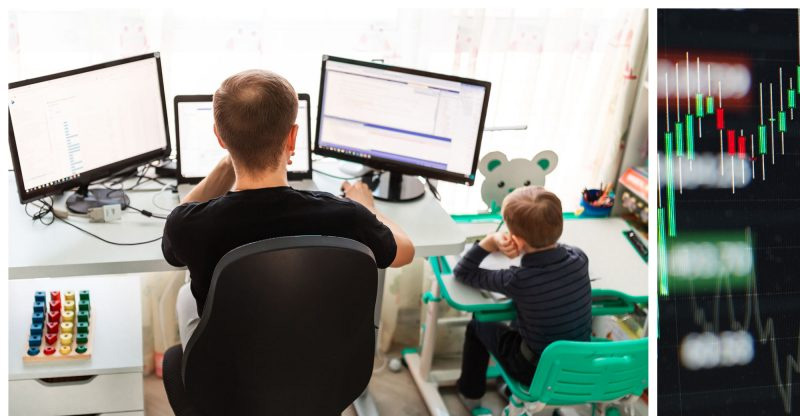A Year in Review: Top Blogs in 2020
December 15, 2020 | By: Ivy Schmerken

The global pandemic was the main story affecting our lives and financial markets. In 2020, many FlexAdvantage and FlexTrade Insights blogs examined how buy-and sell-side traders adapted to remote work and the role of trading technology in volatile markets.
We covered topics such as the transition to remote work for sell-side trading desks, the impact of COVID-19 on corporate bond liquidity, and trends in equity market structure such as the SEC’s market data reforms.
Which topics struck a chord with readers?
The rise in off-exchange market share fueled by retail trading, liquidity aggregation on fixed-income trading desks, and how options traders adjusted to all-electronic trading during the pandemic, were among the most popular. On the technology front, readers were drawn to the adoption of AI and machine learning by algo trading desks, ATSs and Algo Wheels.
Given these developments, here is a list of the “most read” FlexAdvantage and FlexTrade Insights blogs for 2020.
1. Equity Market Structure Wrestles with “Inaccessible Liquidity”

A boom in retail trading during the lockdowns resulted in high levels of order flow executed by broker-dealer on private platforms. Citing the concept of “inaccessible liquidity,” industry panelists said they were unable to interact with this burgeoning source of liquidity, at the STA’s Market Structure 2020 virtual conference.
With the launch of three new stock exchanges, new orders types, and periodic auctions emphasized the benefits of innovation, competition, and lower costs, while critics warned of additional market complexity.
2. Is Remote Work Leading to a Paradigm Shift on the Trading Desk?

In March, the spread of the COVID-19 pandemic compelled banks and broker-dealers to shift their employees to remote work for their safety. Firms discovered that even with 90% of their or more of their sales and trading teams, analysts, and investment bankers working from home they could execute trades in a stressed market.
With massive volumes and quantities of tick data to process, traders relied on connecting to their order and execution management systems, smart-order routing, and algorithms. “The pervasiveness of algorithms and electronic trading made the transition frictionless on the low-touch side of the business,” wrote Shane Remolina, FlexTrade’s Director of Sell-Side OMS Technologies.
3. AI and Machine Learning Gain Momentum with Algo Trading/ATS Amid Volatility

Sell-side firms have been investing in AI and machine learning to develop the next generation of algorithms. With the hiring of data scientists, access to cloud computing, and open-source frameworks for training ML models, the trend is catching on.
Rather than programming with if/then rules, the machine identifies patterns in data and then learns from it. Some AI experts find that models built with AI/ML are faster, more complex, and better able to absorb extreme events such as COVID-19 volatility.
4. After Bond Market Turmoil, Fixed-Income is Top Priority

When fixed-income markets were in turmoil in March, the buy side’s attention was on sourcing liquidity. With so many “jumps” between platforms adding complexity, clients are looking at integrations with the EMS.
“FI automation is picking up and becoming more sophisticated with more granular rules configured at the EMS level,” wrote FlexTrade’s Sales Director EMEA Manuela Bauer. Direct price feeds, RFQs, and full integration to bond execution platforms provide more flexibility, more granularity and control in automation.
5. Options Traders Adapt to Electronic Market in Pandemic

With options exchanges shutting their floors on March 16, all contracts had to be traded electronically without human interaction of the pits. As traders shifted to electronic markets, tools that were previously not required — smart-order routers, spread legging algos, and the ability to access electronic crossing networks — all became a necessity.
With the Cboe VIX hitting a peak of 82.69, and options volumes at record highs, FlexTrade Vice President Equity Derivatives Rob Brogan, writes about how FlexTrade supports volatility trading, real-time Greek calculations, and other sophisticated options strategies.
6. In Volatile Markets Trading Technology Matters

Through the most volatile parts of March, traders faced a rapid increase in the speed and quantity of orders, executions, and ticks generated by electronic markets. A lot depended the architecture of trading systems to process the magnitude of data, and second, on tailoring automation to individual needs.
“Something as simple as segregating out low-touch flow based on order size and automating execution through a broker algorithm frees up time to focus on an ever- expanding set of complex orders, wrote FlexTrade EMEA Managing Director Andy Mahoney.
7. Best Practices in Algo Wheel Design and Implementation

Algo Wheels have become one of the most popular trends in finance. But not many realize they are randomized trials applied to the outcomes of orders, which resemble conducting clinical trials in the healthcare space. In finance, trials are split into two groups – a treatment group and a control group. That’s done by random so that any difference between the two groups is due to the treatment and because each group contains a higher number of or more difficult orders.
8. The Buy Side’s Hunt for Bond Liquidity

Fixed Income leaders cited aggregation tools, portfolio trading and all-to-all networks as necessary to address the liquidity and pricing issues they experienced in March and April. Speaking on TradeTech Europe’s Fixed Income panel, AllianceBernstein’s head trader said the firm must forge ahead with automation.
Aggregation tools that pull in direct pricing streams and RFQs into an execution management system (EMS) or order management system (OMS) are critical to creating a composite view of the fixed-income market.
9. Factor Strategies Reach to Crisis-Induced Volatility

As volatility erupted when the COVID-19 outbreak spread across the world, quants and hedge funds saw their factor-based trading strategies behave in unpredictable ways. Index providers such as MSCI and Qontigo updated their factor-risk models in response to the rapidly changing risk profiles.
Demand for real-time analysis of factor risk on portfolios has been evolving since the 2008 financial crisis. Hedge funds are checking their exposures to factor risk on a more frequent basis, leveraging models such as MSCI Barra integrated into FlexTrade’s OEMS.
10. Reforming the SIP with Odd Lots and Competing Consolidators

A rule proposed by the Securities and Exchange Commission (SEC) to overhaul the content and governance of the consolidated data feeds for stock trading, known as the security information processor or SIP, was a widely debated topic in equity market structure.
The proposed rule was intended to boost the SIP’s content to include depth-of-book data, odd-lot quotes, auction data, and supply/demand order imbalance information, which is currently only available through proprietary data feeds. In addition, it would create multiple competing consolidators to design and distribute other SIPs and level the playing field with the NYSE and Nasdaq.
